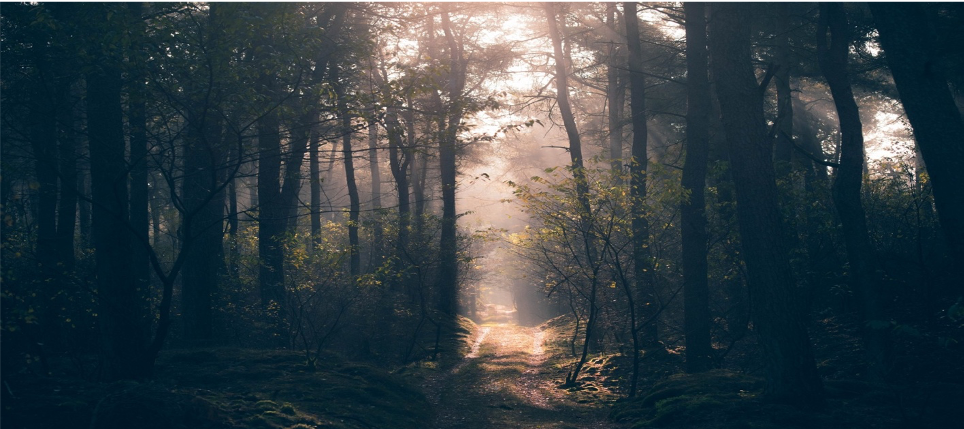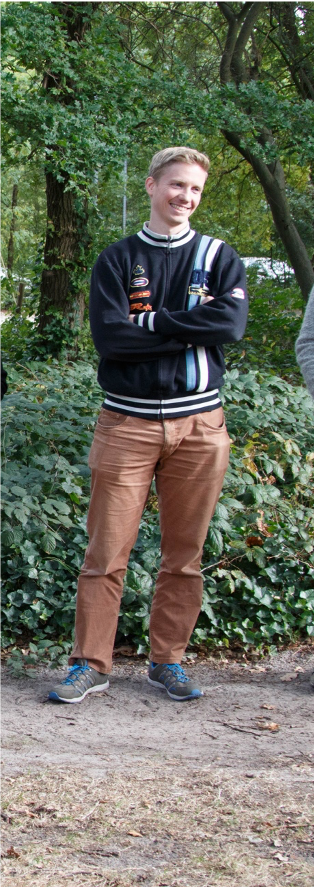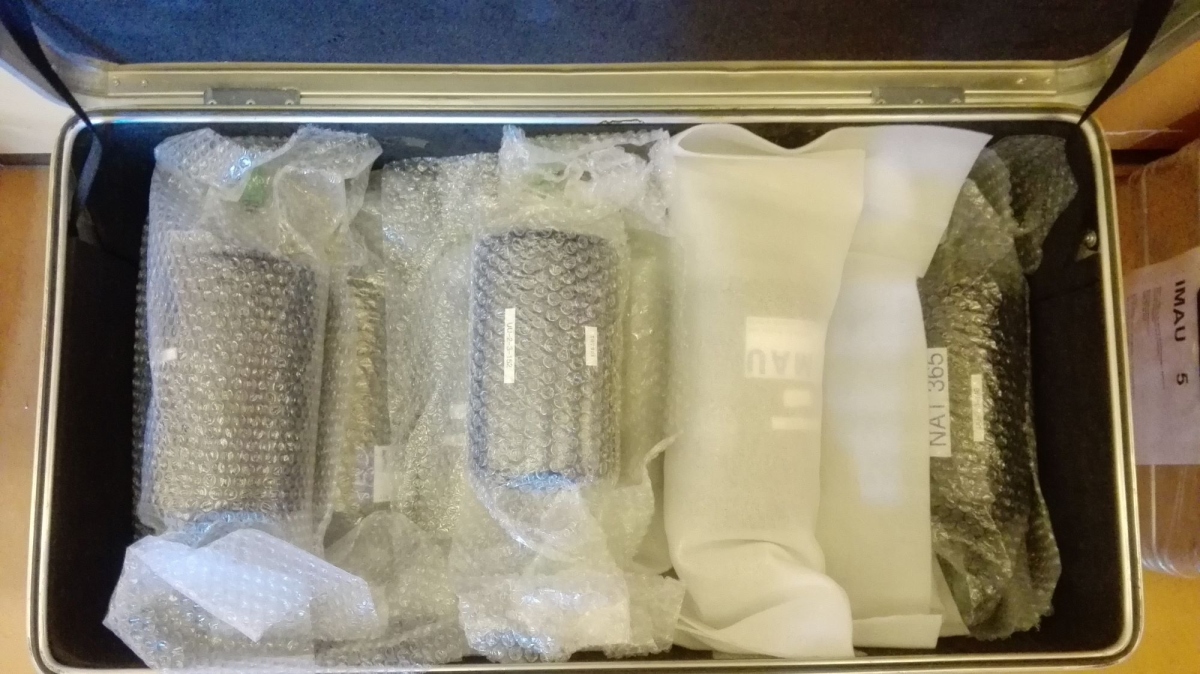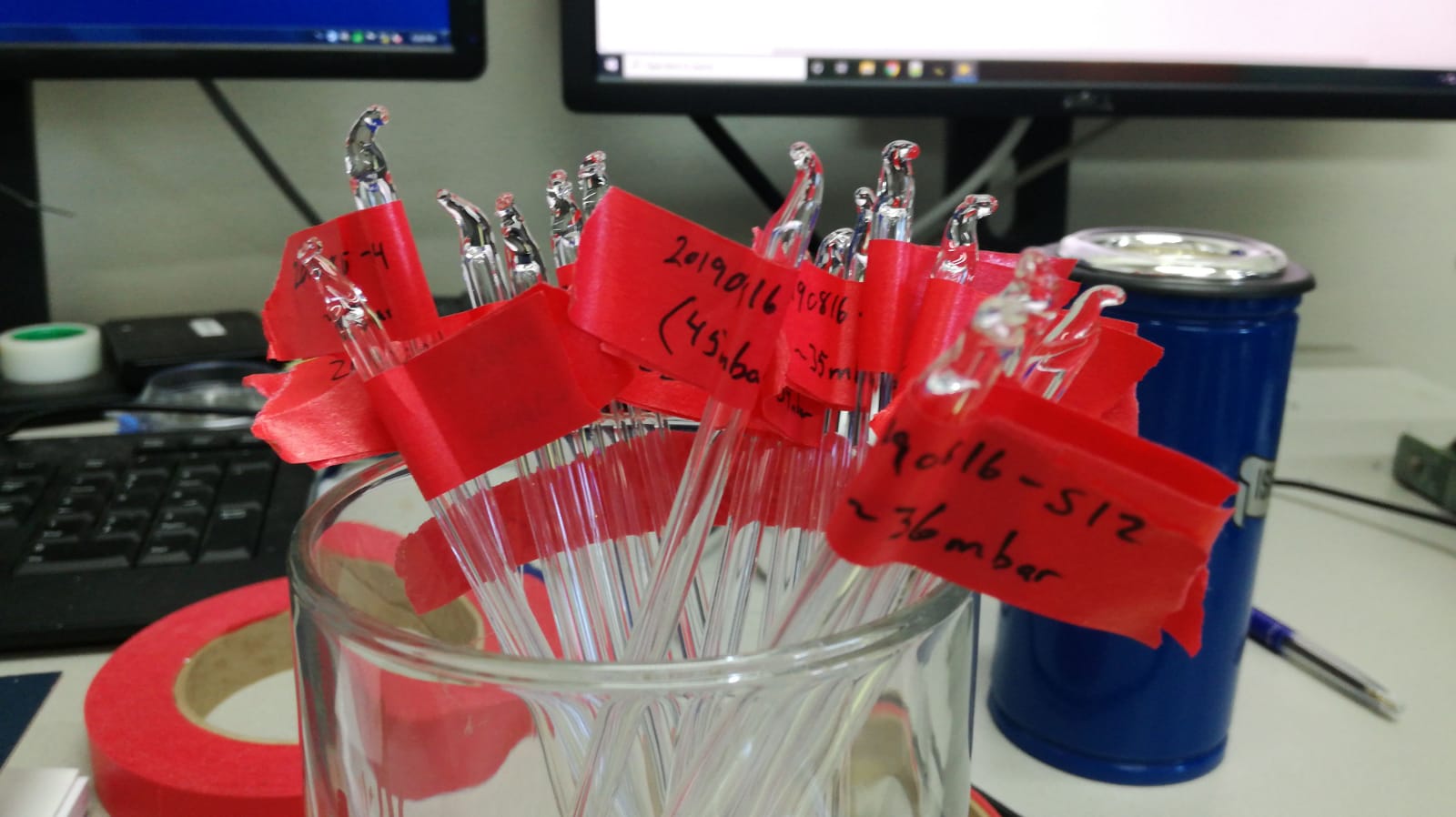The ICOS ecosystem station Loobos is situated in the middle of the Netherlands, about 70km east of Amsterdam. The area used to be heavily cultivated and was eventually invaded by sand, leading to planting of pine trees on sand dunes in the beginning of the 20th century (Figure 1). In Loobos, ICOS measures basic meteorological variables and carbon dioxide and water fluxes using well-tested technologies. The PhD student Gerbrand Koren and his colleagues went to the pine forest area driven by a different motivation: They wanted to learn more about a novel tracer for photosynthesis. Gerbrand’s research mainly focuses on photosynthetic processes and the uptake of carbon dioxide by plants found in the Amazon rainforest. There, the measurements are taken over a range of 5,500,000 km, turning his research into a large-scale project. At the ICOS ecosystem site, he took air samples practicing the measurements on a smaller scale. In addition, ICOS data helped him to collect more information about the novel tracer Δ17O in carbon dioxide which could be the key to understanding how climate change affects our planet earth.


The large geographical distance between Europe and the Amazon is a challenge for Gerbrand’s research project
During photosynthesis in green plants, light energy, water and carbon dioxide is transformed into glucose and oxygen. At the same time, however, plants also release carbon dioxide in a process called respiration. Gerbrand Koren is trying to understand and quantify both processes. He explains: “You can take a single plant, put it in the lab and measure how much carbon dioxide it can take up – biologists have done that for quite some time – but we are not taking these measurements on a single-plant-level. Instead, we aim to find out how many kilograms of carbon dioxide are absorbed by the Amazon and that is quite challenging.” One of the challenges that Gerbrand and other researchers are confronted with is the large geographical distance between Europe and South America. “For European researchers, the Amazon is very far away and going there requires a lot of logistic work”, Gerbrand explains. “Having the opportunity to access the ICOS forest site (Figure 2) helps us to practice measurements. Based on what we find there, we can formulate scientific questions more concisely”, he adds.

Gerbrand Koren’s way into academia was, as he says himself, rather atypical. Before starting a PhD project at Wageningen University, he worked as an engineer in a Dutch company. “Initially, I solved problems that are related to physics but had nothing in common with biology”, he says. However, Gerbrand realised that he did not want to take the safe route of having a normal 9-5 job for all of his life. “I wanted something more challenging and, honestly, I was always more interested in the world around me than technology”, he adds. Nowadays, Gerbrand Koren is father of two children and a PhD student in his final year before he starts a post-doc position (Figure 3).
“Many scientists have suggested that the novel tracer Δ17O in carbon dioxide can tell us more about photosynthesis”
His special research interest lies in isotopes, particularly oxygen isotopes in carbon dioxide. Oxygen isotopes are characterized by their atomic mass which indicates how many neutrons and protons are within its nucleus. The most common isotope, oxygen-16 consists of eight protons and eight neutrons. In addition, oxygen has two rare stable isotopes, oxygen-17 and oxygen-18, that have one and two additional neutrons in their nucleus, respectively. Gerbrand’s research focuses on Δ17O, which is an isotopic signature that contains information about the relative amountsof oxygen-16, oxygen-17, and oxygen-18 in carbon dioxide. It is also known as the triple oxygen isotope signature. “Many scientists have suggested that Δ17O, the novel tracer, can tell us about photosynthesis. We study the variation of Δ17O in carbon dioxide in the atmosphere, which eventually might tell us how much carbon dioxide is being taken up by plants”, Gerbrand explains. To non-scientists this might seem very complicated and confusing. “Nevertheless”, as Gerbrand says, “if you want to predict how our climate is going to change and how vegetation will adapt to these changes, you need to understand all individual processes just like that one.”
ICOS data helps Gerbrand to contextualise the measurements he took at the ecosystem site Loobos
The measurements that Gerbrand and his colleagues took at the ICOS site in Loobos were the first of its kind. Throughout a whole day, the researchers took air samples which were later analysed in the labby PhD-colleague Getachew Adnew at Utrecht University (Figure 4 and 5). “The ecosystem site in Loobos was very easily accessible. The manager of the measurement station gave the park ranger a call and he allowed us to stay for the night.” Although the interpretation of the results remains difficult, Gerbrand highlights how useful it was to have a free access to ICOS data. “During the day we spent there, we found a very high peak in oxygen isotopes. However, we are unsure what it means. Here, ICOS data helps because we can simulate this day based on other measurements that were being taken there, like temperature or carbon dioxide concentration, and compare it to what we have found. If we had just gone to a random forest, took air samples and found a high value of Δ17O, it would be impossible to go further with the analysis because we would not know anything about the place.”

Photo taken by Gerbrand Koren

ready to be measured in the isotope system. Photo taken by Getachew Adnew.
Gerbrand has already made plans to return to the ecosystem site in Loobos and take more measurements in order to prepare for a trip to South America, possibly next year. “If you want you can compare my work to the process of doing a puzzle. Sometimes, I spend a whole day trying to solve a bug in a code, that is my task for the day. Solving small problems is satisfying for me but at times it makes me forget that my work also contributes to better understanding climate change and perhaps even its mitigation” Soon, Gerbrand will start a postdoc position jointly supported by the Wageningen University and the National Oceanic and Atmospheric Administration in Boulder, Colorado, aiming to continue with the meaningful work he is already doing. Besides all the upcoming projects, however, his main occupation will remain to be a dad: “The most important thing in my life is my family, playing with my kids gives me so much joy – it’s my greatest hobby”